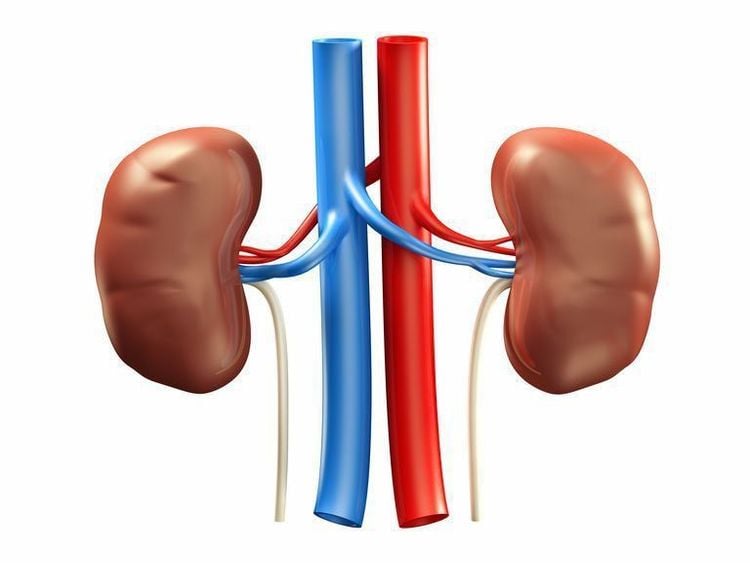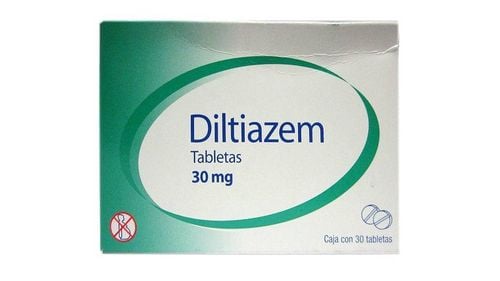This is an automatically translated article.
The article was professionally consulted with Specialist Doctor II Nguyen Quoc Viet - Department of Medical Examination & Internal Medicine - Vinmec Da Nang International General Hospital.Renal artery stenosis is a common problem in clinical practice, occurring when the renal artery is narrowed, restricting blood flow to the kidney. The two most common causes of renal stenosis are fibromuscular dysplasia and atherosclerotic renal artery disease (accounting for
90% of cases).
1. What is renal artery stenosis?
Renal artery stenosis is the general term used to refer to any blood vessel damage that narrows the lumen of the artery that supplies blood to the kidney, thereby impairing blood flow to the kidney.The two most common pathophysiological forms are fibromuscular dysplasia and atherosclerotic renal artery disease. In which, renal artery stenosis due to atherosclerosis accounts for the majority of cases.
Renal artery diseases in general and renal artery stenosis in particular are associated with three main clinical syndromes: ischemic nephropathy, hypertension, and cardiovascular instability syndrome. However, the diagnosis of renal artery stenosis can sometimes also be the result of an incidental finding in an asymptomatic patient. In the majority of cases, the diagnosis of renal artery stenosis is associated with a poor prognosis and is often associated with concomitant atherosclerosis in other vascular beds.
Therefore, a variety of diagnostic modalities and treatment methods for renal artery stenosis have been presented for clinicians to consider indications depending on the situation. In particular, the advent of endovascular interventions allows optimal intervention possibilities for patients who do not respond to conservative treatment in various forms of renal artery stenosis, including renal artery stenosis due to atherosclerotic and non-atherosclerotic.

2. Non-atherosclerotic renal artery stenosis
Although non-atherosclerotic renal artery disease is rare, it has many causes:Fibromuscular dysplasia Aneurysmal aneurysms Congenital or traumatic arterial fistula Inflammation of the blood vessels Neurofibromatosis Vascular injury Thromboembolism, amniotic fluid embolism Consequences after radiotherapy and surgery Of the above causes, fibromuscular dysplasia is by far the most common cause, accounting for 10% total number of cases of renal artery stenosis in general. Pathogenesis, which mainly affects premenopausal women, is associated with a history of smoking and hypertension. Unlike atherosclerotic vascular disease, renal artery stenosis due to fibromuscular dysplasia is largely a disease of young and healthy individuals with few cardiovascular risk factors.
On angiographic imaging, fibromuscular dysplasia occurring over renal artery stenosis has been classically described as having a “chained granule” appearance due to the contrast medium of successive aneurysms along the renal artery. The most commonly affected site is about the distal two-thirds of the renal artery; However, this disease can also affect the vertebral and carotid arteries at the same time with symptoms of cerebral ischemia.
Although it may resemble vasculitis, fibromuscular dysplasia has denied the pathophysiology of inflammation and its etiology remains unknown. Some theories have suggested that genetic material may play a role.
Fortunately, in most cases, renal artery stenosis due to fibromuscular dysplasia generally has a good prognosis and usually does not progress to complete occlusion of the renal artery, complicating chronic renal failure.

3. Renal artery stenosis due to atherosclerosis
Atherosclerotic disease is the most common pathogenesis affecting the renal arteries, accounting for 90% of all cases. The site of renal artery stenosis usually occurs in the proximal one-third of the renal artery, including even at the site of its division from the aorta.Unlike renal artery stenosis due to fibromuscular dysplasia, patients with atherosclerotic renal artery stenosis are usually elderly and have multiple cardiovascular risk factors. In these patients, atherosclerosis is generally a systemic condition and is not limited to the renal artery but also involves various vascular beds such as the heart and brain.
As the disease progresses untreated, atherosclerotic renal artery stenosis will be characterized by progressive narrowing and eventually complete occlusion of the renal artery. Therefore, the outcome of this group of patients is often worse.
In summary, renal artery stenosis is a common disease commonly associated with other atherosclerotic vascular diseases. If not detected and treated, renal artery stenosis can lead to a poor prognosis in terms of progression, impaired renal function, and overall mortality. Thus, in the high-risk group of atherosclerotic cardiovascular disease, screening of renal function and periodic monitoring of renal arteries is an indispensable component to protect cardiovascular health in general.
If you have a need for consultation and examination at Vinmec Hospitals of the national health system, please book an appointment on the website (vinmec.com) for service.
Please dial HOTLINE for more information or register for an appointment HERE. Download MyVinmec app to make appointments faster and to manage your bookings easily.














